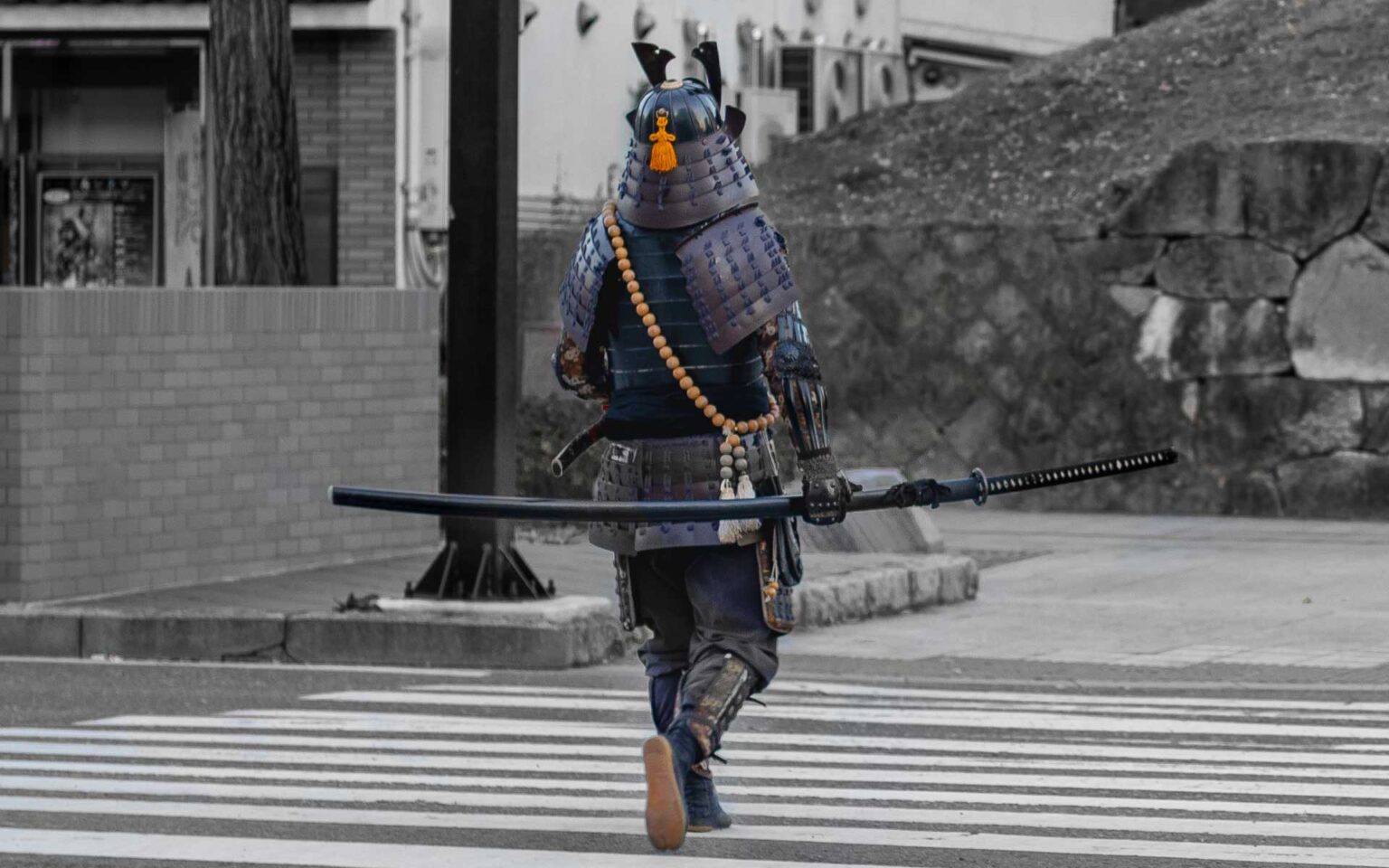You might imagine a samurai as a solitary warrior. A soldier who is brandishing a katana and effortlessly cutting down opponents. Surprisingly, samurai’s weaponry didn’t consist of just one blade. In fact, samurai were known to carry three different swords. Each has a unique purpose. These weapons weren’t only used in battle. They represented status and honor, a warrior’s way of life.
So, how did these swords become special? Which criteria did the samurai use to decide which to wield in ceremony or battle? This article will unravel the puzzle behind these historic blades and explore their exciting roles in samurai culture.
Overview of the Samurai Sword Tradition
Historical Significance
Samurai swords go beyond being mere weapons. They are deeply infused with history, reflecting Japan’s warfare, craft, and culture. Early swords were designed for horseback combat during the Heian period. However, as battles switched to ground encounters, their designs changed. By the Kamakura period, the curved blade shape was perfected to balance functionality with artistry. Carrying multiple swords wasn’t merely practical. It became a rank and social standing mark. Samurai considered their swords the “soul of the warrior.” They embodied honor, duty, and commitment to their code of ethics.
The Concept of the Samurai’s Daishō
The term Daishō translates to “big-little.” It refers to a pair of swords carried by samurai. This included the long katana and the shorter wakizashi. This pairing wasn’t accidental. Instead, it represented the unity of discipline and power. The Daishō wasn’t just functional, but it was also deeply personal.
Samurai often had their swords custom-made. They tailored the weight, length, and design to suit their battle style. Beyond practicality, the Daishō became the samurai’s symbolic armament. It distinguished them from farmers, merchants, and artisans. This dual-sword practice was central to the samurai’s lasting legacy.
The Three Swords of a Samurai
Katana: The Warrior’s Primary Weapon
The katana is Japan’s most esteemed treasure. Its long curved blades deliver better cutting maneuvers. Samurai used the katana in open combat. They relied on its razor-sharp edge and excellent balance for powerful strikes.
Beyond its functionality, the katana portrayed a samurai’s honor and spirit. This made it more than a mere weapon. Artisans forged katanas meticulously. They layered steel to ensure strength and flexibility. Samurai wore the katana blade up for a quick draw. This emphasized its readiness for battle.
Wakizashi: The Companion Sword
The wakizashi is shorter than the katana. It measures nearly 30–60 cm long. It served as a backup weapon. It offered versatility in tight spaces where the katana wasn’t practical. The wakizashi was more than a secondary blade. It was a tool for ceremonial practices. Samurai often used it for a ritual of honorable suicide.
The wakizashi and the katana together formed the Daishō. This signified a samurai’s status and identity. Its shorter length made it ideal for close combat and personal defense. Samurai never parted with their wakizashi, keeping it close at all times.
Tanto: The Samurai’s Dagger
Unlike the katana, the tanto was a small weapon, typically under 30 cm. While the tanto could slash, its strength lay in stabbing and self-defense. The tanto’s compact size made it easy to conceal, offering an advantage in unexpected encounters. Samurai sometimes carried it as a third weapon, complementing their Daishō. In addition to combat, the tanto had ceremonial significance. It was often gifted as a symbol of loyalty or crafted as an ornate piece of art. Women of the samurai class also carried tanto for self-protection. Despite its size, the tanto embodied the same craftsmanship and respect as larger swords.
Practical Applications and Symbolism
Use in Battle
Samurai carried multiple swords for strategic purposes in combat. The katana was the primary weapon for open-field battles. It allowed swift, precise strikes due to its length and sharpness. The wakizashi was better suited for close quarters. These areas were often cumbersome for long blades. The tanto provided an additional layer of defense in unexpected scenarios like grappling situations. By mastering all three weapons, samurai were ready for various combat scenarios. It showcased their adaptability and tactical expertise. Each sword helped the other, creating a versatile and deadly arsenal for the battlefield.
Symbolic and Ritual Roles
Samurai swords carried profound symbolic meaning beyond their practical use. The katana often represented honor, loyalty, and martial skill. The wakizashi played a crucial role in rituals. It emphasized the samurai’s commitment to their code of honor. The tanto was often a symbol of loyalty or protection. Sometimes, it was given as a ceremonial gift or carried by women for self-defense. Together, these swords represented the samurai’s identity. They served as a constant reminder of their duty to observe the warrior’s way.
Legacy of the Samurai Swords
Modern-Day Representation
Samurai swords remain celebrated worldwide. They reflect the mastery, discipline, and precision of the artistic talent of the Katana sword for sale Masamune Swords swordsmiths who made them. Today, they are integral to martial arts like Kendo and Kenjutsu. Martial artists fully honor traditional swordsmanship techniques.
Genuine nihonto are valuable collectibles in galleries, homes, and museums as decorative pieces. They are celebrated as historical artifacts and masterpieces of artistry. The katana, in particular, has become a global icon. It frequently appears in films, books, and art to represent strength, precision, and Japan’s rich heritage.
Cultural and Artistic Impact
The creation of samurai swords remains a revered art form in Japan. Modern swordsmiths follow centuries-old forging techniques. This ensures the legacy of traditional craftsmanship endures. Beyond their functional purpose, these swords are celebrated as works of art. They contain intricate details on their blades and fittings. Their cultural influence extends to design, inspiring modern knives and fictional weapons in pop culture.
Conclusion
The samurai’s three swords reflected unique aspects of their social status. Each blade had a distinct role, from the katana’s use in combat to the wakizashi’s flexibility. Together, they represented the samurai’s determination to honor the bushido code.
These swords also held deep cultural and symbolic significance. They represented a warrior’s identity and legacy. Today, samurai swords remain influential icons of Japanese heritage. They are celebrated for their craftsmanship and enduring influence. By understanding these blades, we gain insight into the samurai’s world and the timeless values they uphold.

















